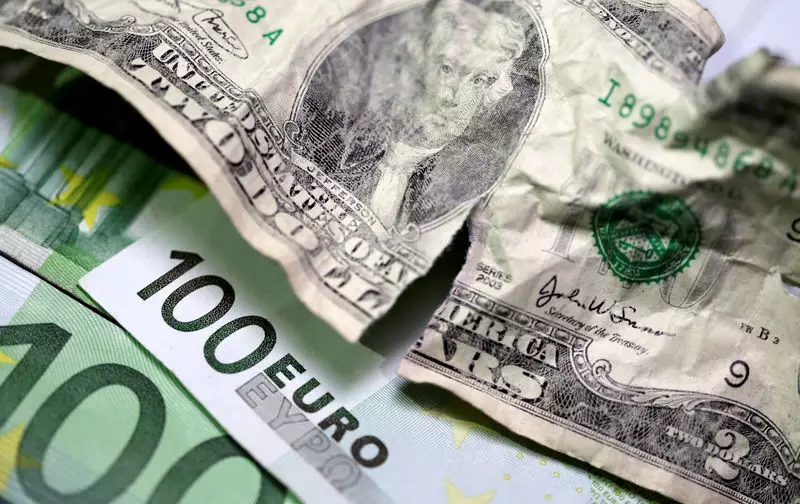The fluctuation of currency values often signals shifts in economic fundamentals, and the recent behavior of the US dollar provides a compelling case. On Thursday, the US dollar experienced a mild retreat as financial markets awaited crucial labor market statistics that could shape future monetary policy. Conversely, the euro displayed resilience, inching upwards despite the backdrop of political instability in France. This article dissects the recent movements in currency markets and contemplates the potential ramifications on economic strategies.
As of early Thursday, the Dollar Index, which measures the dollar’s strength against six major currencies, showed a decrease of 0.1% to 106.180. The recent depreciation of the dollar can be linked to disappointing private payroll figures, suggesting a deceleration in job growth. The services sector, a cornerstone of the US economy, also exhibited signs of weakness in November, marking a downturn after consistent growth in previous months.
The Federal Reserve Chair, Jerome Powell, has recently suggested that the US economy is more resilient than initial forecasts indicated. This assertion came in light of the Fed’s decision to curtail interest rate hikes that were initiated in the fall, as a response to inflationary pressures. The market is anticipating a potential interest rate cut in December, but the upcoming weekly jobless claims and the pivotal non-farm payroll (NFP) data scheduled to be released could provide insights on how monetary policy may evolve in the near future. Analysts at ING emphasized the importance of the NFP data in determining the direction of the dollar, indicating that while initial jobless claims have remained low, the broader employment metrics bear more weight in shaping market expectations.
In stark contrast to the US dollar, the euro managed a slight recovery, climbing 0.2% to reach 1.0532 against the dollar. This comes after the euro hit a two-year low of 1.0331 at the end of November, reflecting increased volatility fueled by domestic political developments. Notably, French Prime Minister Michel Barnier’s resignation after a no-confidence vote has raised concerns over potential delays in implementing fiscal policies aimed at addressing France’s substantial budget deficit. Although these political developments pose challenges, the long-term economic trajectory necessitates action sooner rather than later.
In economic terms, recent statistics reflect a concerning trend in Europe’s industrial performance. German factory orders contracted by 1.5% in October, and French industrial production also witnessed a decline. These figures suggest that growth across the eurozone might falter, prompting expectations of forthcoming monetary easing. The European Central Bank (ECB) is widely predicted to announce rate cuts in the following week, with the market currently pricing in over 150 basis points of rate reductions by the end of 2025. ING analysts commented on the potential resistance level for EUR/USD at 1.0550 and projected a likely hovering around the 1.0500 mark in the days ahead.
The impact of these currency fluctuations extends beyond just the dollar and euro. For instance, the British pound (GBP) saw a slight uplift, gaining 0.2% to reach 1.2721, buoyed by stronger than expected construction data. In Asia, the USD/JPY pair saw a decrease of 0.2%, and the Australian dollar remained stable with a gain against its US counterpart. The South Korean won was an outlier in this scenario, experiencing a 0.5% rise against the dollar, following significant governmental intervention in response to social unrest and economic pressure.
As geopolitical tensions and economic uncertainties prevail worldwide, currency fluctuations will likely continue to reflect investor sentiment and expectations regarding future growth. With a keen eye on labor market data, central bank policies, and political stability, investors must navigate these turbulent waters prudently. While the current trends reveal immediate vulnerabilities, an informed approach can unlock potential opportunities in a shifting global marketplace.


Leave a Reply